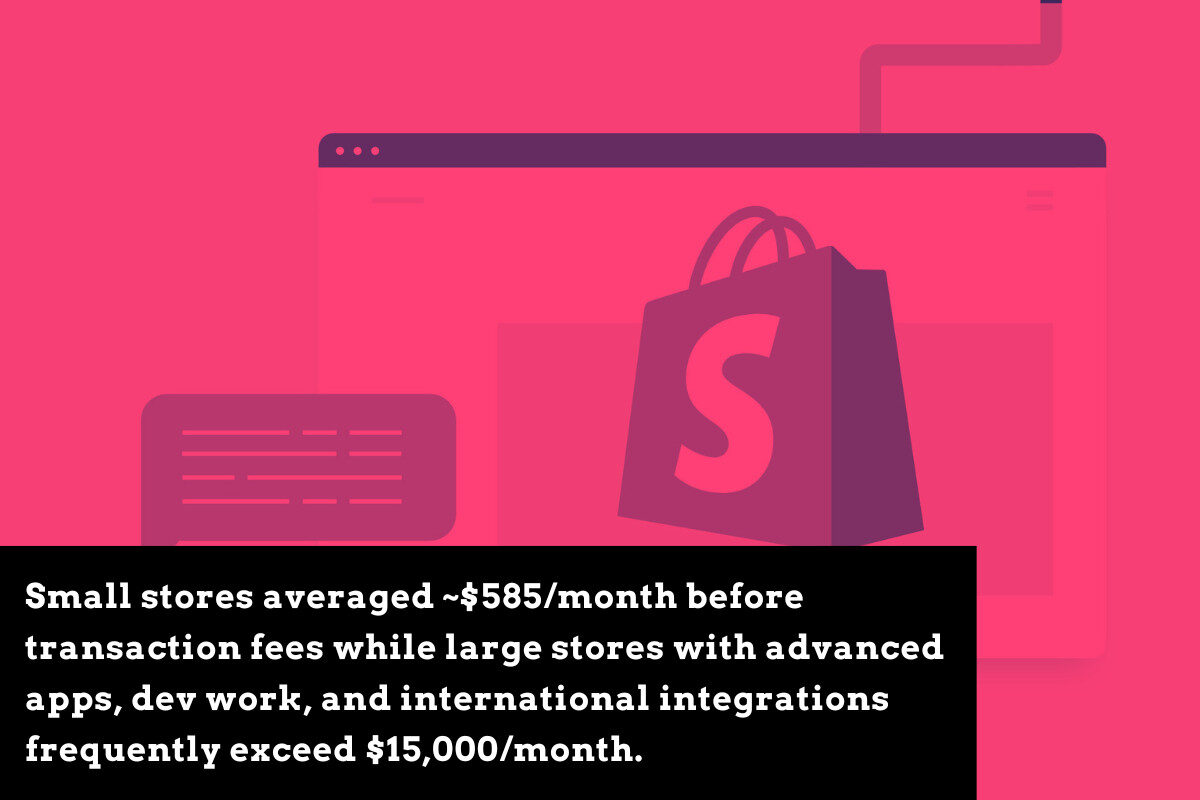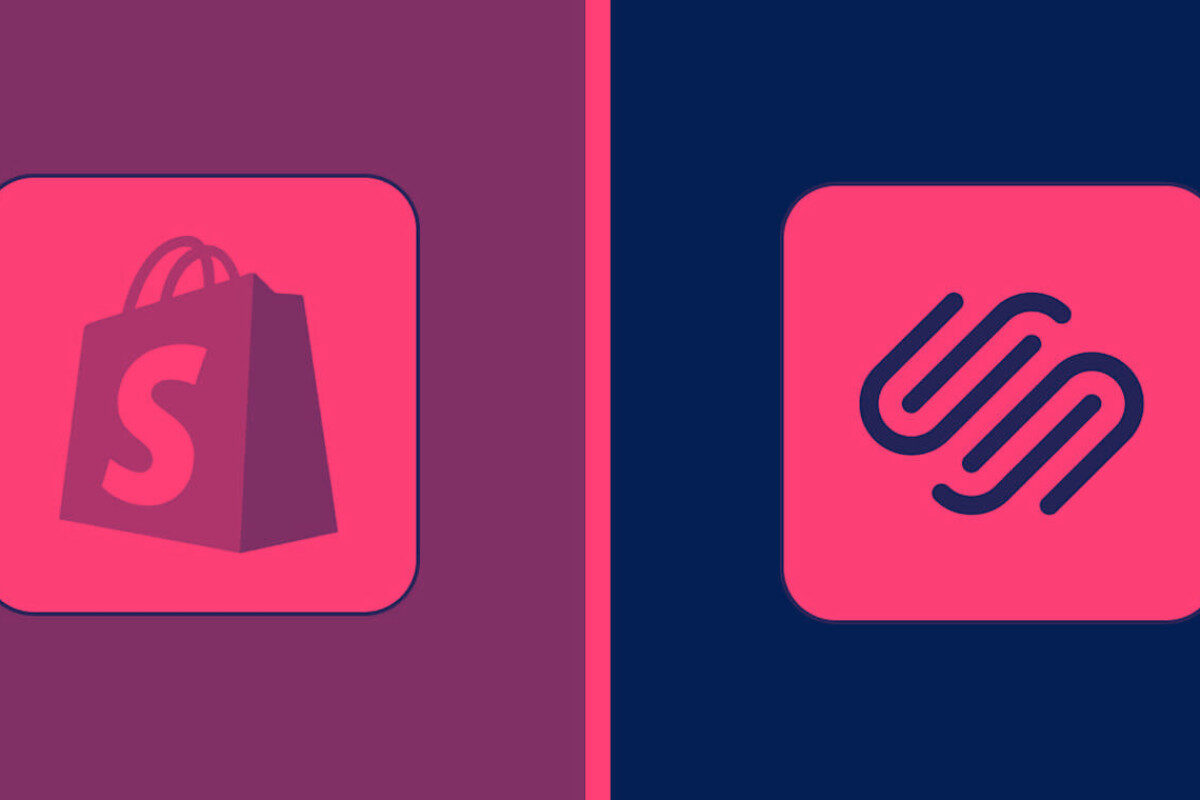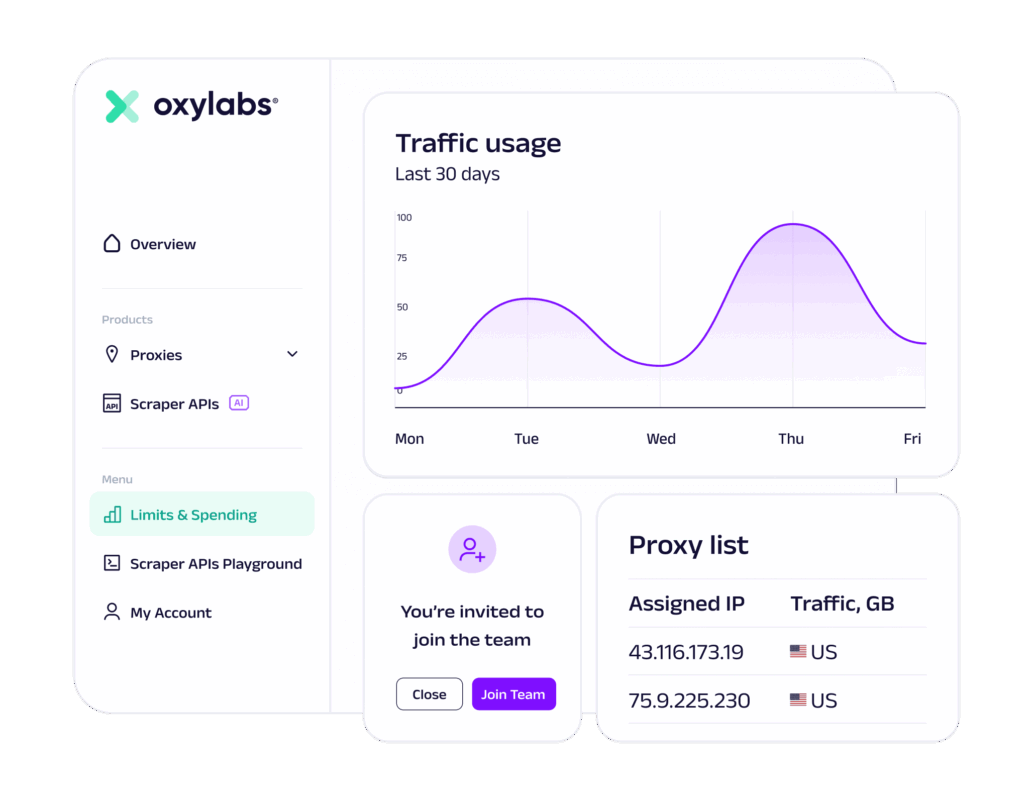TL;DR – What’s The Best E-Commerce Solution For Creators & Influencers?
The choice is simple for creators and influencers:
Squarespace is best for digital products
It’s the best option for selling digital products, memberships, and downloadable content. You’ll love its stunning templates, easy-to-use interface, and lower, more predictable costs.
Shopify is best for full-stack e-commerce with physical products.
Choose Shopify if you’re focused on physical goods. It’s the industry standard for selling products and scaling your brand. While it costs more and has a steeper learning curve, it gives you all the e-commerce power you need to grow from a side hustle to a full-blown business.
Need more detail? We got 4000+ words of information below for you…
- TL;DR – What’s The Best E-Commerce Solution For Creators & Influencers?
- Platform Purpose and Core Audience
- Pricing and Plans
- The Real Cost of Running Shopify vs Squarespace
- Which Is The Easiest To Setup?
- Design and Templates
- E-Commerce Features
- Marketing and Growth Tools
- Scalability
- Creator and Influencer Strengths
- Pros and Cons at a Glance
- Content Management
- Wrapping Up / Key Takeaways For Both Platforms
- Editor’s Verdict
Shopify and Squarespace are two of the biggest e-commerce platforms used by creators and influencers who want to monetize their audiences.
Both let you sell online, but it is super-important to know what you’re going to be selling before you commit to one or the other.
- Shopify is built from the ground up for e-commerce and scale; it’s perfect for physical product and scaling to huge numbers.
- Squarespace is better suited to projects that focus on things like digital downloads, memberships, and courses.
If you are a creator deciding between the two, this guide compares costs, usability, design, selling features, integrations, and creator-specific strengths.
Platform Purpose and Core Audience

- Shopify is the go-to for creators ready to sell physical products at scale, run merch drops, use print-on-demand, or launch a full brand. It is commerce-first with inventory, order management, and multi-channel selling built in.
- Squarespace is designed for content-driven creators like photographers, coaches, writers, and service providers. It shines when you need a stunning site that blends media, content, memberships, and light e-commerce.
Shopify is the most popular e-commerce platform on the market, next to WooCommerce.
It’s used by millions of businesses and, for the most part, is great at what it does.
If you want to sell physical goods or products, Shopify is the simplest most future-proof platform right now. It’s no-code, for the most part, too which makes it great for beginners and first-timers.
But if you don’t need everything-and-the-kitchen-sink, Shopify might be overkill for your needs.
And this is where Squarespace inserts itself into the e-commerce equation.
It’s more focused on digital deliverables like membership sites, courses, and digital downloads, while Shopify does everything from digital to physical goods and services.
Pricing and Plans
| Feature | Shopify | Squarespace |
|---|---|---|
| Monthly Price | $5 Starter, $29–$299 core tiers, $2,000+ Plus | $16–$99 with 14-day trial |
| Transaction Fee | 0% with Shopify Payments, 2% otherwise | 0–2% depending on plan |
| Domain | $11–$18/year extra | Free first year on most plans |
Shopify tends to cost more but includes more capabilities and features for traditional e-commerce.
If you plan on selling physical goods, this is important to keep in mind.
For instance, a fitness influencer might launch their own line of supplements.
For this, you’d want Shopify because this is a traditional B2C operation, involving shipping, shipping receipts, and product categories.
Another influencer sells diet plans, 100% digital products.
For this person, Squarespace would be preferable. It’s cheaper up front and has lower overall costs versus a full-spec Shopify store.
The Real Cost of Running Shopify vs Squarespace

It is easy to compare headline subscription prices. Shopify starts at $29 per month and Squarespace at $16 per month.
But the true cost of owning and running an e-commerce store looks very different once you are actually running a store.
In a study we ran of 20 active Shopify stores, the gap between the base plan and real-world spend was eye-opening:
| Expense Type | Shopify (Typical) | Squarespace (Typical) |
|---|---|---|
| Base Platform | $29–$299/month (Plus $2,000+) | $16–$99/month |
| Domains | $11–$18/year | Free first year, then ~$20/yr |
| Apps / Plugins | 6–10 apps, $450–$650/month (often more than plan) | Most features bundled |
| Transaction Fees | 2.4–2.9% + $0.30/order (+0.5–2% with 3rd parties) | 0–2% depending on plan |
| Extra SaaS Tools | $90–$150+/month (email, accounting, support) | Rarely needed |
| Baseline Monthly Spend | ~$585/month for small stores; $15,000+ for large | $16–$99/month all-in |
What the data shows:
- Shopify’s real cost grows fast as you scale.
- Even a $5k per month store typically spends around $585 per month before transaction fees.
- Six-figure Shopify Plus brands often exceed $15k per month once apps, SaaS tools, and development work are factored in.
In this context, Squarespace is far more predictable when it comes to costs, both in the short, medium and long term.
Most of what creators need such as memberships, email campaigns, and scheduling is already built in, so costs stay close to the advertised plan price.
👉 For creators, this means:
- If you are doing merch drops, POD, or building a brand, Shopify gives you the infrastructure but you need to budget realistically for apps and fees.
- If you are selling services, courses, or digital downloads, Squarespace is usually cheaper and simpler since you will not be relying on a marketplace of add-ons.
Which Is The Easiest To Setup?
| Feature | Squarespace | Shopify |
|---|---|---|
| Ease of Setup | Very quick. Choose a template and edit right away | Guided setup but more steps to add products and sales channels |
| Templates | 200+ included with plan | 12 free + 80+ paid (from $150+) |
| Design Quality | Highly visual, modern, portfolio-style | Functional and commerce-focused |
| Editor | Drag-and-drop with responsive layouts | Drag-and-drop, slightly less flexible |
| Product Pages | Beautiful visuals, image zoom, galleries | Functional but simpler out of the box |
| AI Help | Blueprint AI suggests a template for you | Sidekick AI helps with sales insights |
| Best For | Beginners who want stylish sites fast | Sellers focused on e-commerce growth |
- Shopify: More setup steps but offers guided onboarding for products and sales channels. Great for big stores, slightly overwhelming for beginners.
- Squarespace: Drag-and-drop simplicity. You can get a polished site online in hours without tutorials. Perfect for first-time site owners.
Shopify Is Best For Big Projects, Squarespace Is Best For Simple Builds & Digital Products
Shopify and Squarespace are designed to be fairly easy to set up, both are no-code and use block-based drag-and-drop design editors.
You won’t need to know or use any code, HTML, or scripts to use either, but Shopify is definitely the more complex of the two platforms.


Both platforms also offer 100+ templates to start from, although Shopify only has a small selection of free ones, while Squarespace gives you a much wider choice included in your plan.
I’ve set up stores on both platforms and Squarespace is definitely the easiest to use out of the two.
It’s not quite as involved as Shopify, the interface is cleaner and less intimidating, and the templates you get not only look great but there’s also more to choose from than you get with Shopify.
Shopify gives you a few free templates but if you want anything even remotely fancy, you’ll have to pay for a premium theme which means more cost.

If I were setting up a store that focussed solely on digital products, I’d go with Squarespace.
The templates are gorgeous and you can move faster with the design process, spinning up product pages, landing pages, and stuff like your blog post template and homepage with little to no experience.

Everything is designed to work out of the box which makes it great for first-time creators looking to get a store up and running quickly.
Shopify has made big improvements in the last couple of years and is catching up in design flexibility, but getting a simple MVP up still takes longer than it does with Squarespace.
But part of its complexity is based on the fact that it does more, has more capabilities and features.
And for certain types of users (anyone selling physical products and goods), these capabilities will be essential.
If your main goal is to scale up and sell at high volumes, Shopify is the stronger choice, even if the design side takes a little more effort.
Squarespace has plug-and-play features to guide you through the whole set-up process and, because it’s 2025 and you can’t do anything without AI anymore, there’s even a built in AI helper.

Its called Blueprint AI tool and it can generate a customized template just by asking you a few questions about your business.
And you know what? It’s actually pretty good. I tested it out when it first dropped and it delivered impressive one-shot designs with just a few prompts from my answers.
If you feel overwhelmed by options and want a starting point that already looks tailored to your brand, you’ll like what Blueprint AI does.
In short: Squarespace is usually the easier pick for beginners who care most about visuals, while Shopify’s design tools are better suited to sellers who are ready to focus on growth and advanced e-commerce.
Design and Templates
- Shopify: 12+ free themes and 80+ paid options. They are functional and commerce-driven, though less design-led than Squarespace.
- Squarespace: 200+ free, responsive templates known for their visual polish. Great for portfolios, media-heavy pages, and personal brands.
Here, Squarespace is the best option for choice. You can get a professional-looking store with everything you need for the advertised price.
With Shopify, the free templates are limited AF and don’t look as good; they want you to buy the premium ones. This means more cost to get something professional-looking.
E-Commerce Features
| Feature | Shopify | Squarespace |
|---|---|---|
| Product Management | Advanced inventory, SKUs, fulfillment | Basic catalog, limited bulk |
| Omnichannel Selling | Sell on TikTok, Meta, Google, Amazon, POS | Native FB/Instagram only |
| Payment Gateways | 100+ global options | Stripe, PayPal, a few others |
| Abandoned Cart | Built in across plans | Only on higher-tier plans |
| Shipping | UPS, USPS, DHL + full app marketplace | UPS, USPS, limited extras |
| Digital Products | Needs an app | Native and simple |
Marketing and Growth Tools
- Shopify: Huge app store with thousands of integrations for email, SMS, loyalty, affiliates, and more. Supports influencer collabs, print-on-demand, and advanced automations.
When I first set up a Shopify store, the app store felt like both a blessing and a curse.
On the plus side, you can find a tool for almost anything: automated email flows with Klaviyo, loyalty points through Yotpo, affiliate programs, SMS campaigns, upsell apps, you name it.
This means if you want to copy the playbook of big DTC brands (think “10% off if you refer a friend” or abandoned cart recovery texts) you can do it with a few clicks.
The flip side is that the costs add up quickly. One store I worked with was paying more each month on apps ($600+) than on the actual Shopify subscription.

But for serious growth, the flexibility is worth it.
I’ve run influencer drops where we connected Shopify directly to TikTok Shop and Instagram Shopping, and the campaigns moved seamlessly from content to checkout.
That level of integration is tough to beat.
Squarespace takes the opposite approach.
Instead of browsing thousands of third-party apps, most of what you need is already baked in.

I helped set up a coaching site on Squarespace where email campaigns, scheduling, and memberships were all included from the start.
There was no messing around with third-party installs or learning new dashboards, the tools were already there, tightly integrated, and easy to manage from one place.
The trade-off is that you do not get the same level of depth.
For example, Squarespace’s email tool is fine for newsletters and simple automations, but it’s no Klaviyo.
Same with memberships: great for launching a course or paid blog, but less customizable if you want complex tiers or gamified rewards.
Scalability
- Squarespace: Works well for smaller stores, but scaling beyond a few hundred products or complex automations gets tricky.
One of the reasons I recommend Shopify to creators who are serious about selling physical products is how well it scales.
I have seen stores handle sudden traffic spikes from influencer shoutouts or viral TikToks without crashing.
Shopify’s infrastructure is designed for high volume, whether you are running a catalog with hundreds of SKUs or fulfilling thousands of orders a day.
When you reach the big leagues, Shopify Plus unlocks features like multi-store and multi-country management, deeper API access, and fully customizable checkouts.
It is not cheap at around $2,000 per month, but for brands running six or seven figures in revenue, it pays for itself in stability and conversion boosts.
I once worked with a brand that went from selling 50 orders per day to over 5,000 in under a year, and Shopify scaled with them every step of the way.
Squarespace is perfect for smaller stores that want to stay lean and simple.

I helped a photographer set up a Squarespace shop for selling prints and digital downloads, and it handled everything smoothly.
The templates looked beautiful, and the built-in e-commerce features were more than enough at that scale.
The limits start to show when you push into more complex operations.
Managing hundreds of product variations or automating advanced workflows is difficult.
There are fewer integrations for logistics, inventory, or global tax compliance.
If your business ever outgrows Squarespace, migrating to Shopify or another e-commerce platform becomes the logical next step.
Creator and Influencer Strengths
Shopify
- Collabs app makes influencer partnerships easy.
- Apps extend stores into loyalty programs, fan subscriptions, and more.
Squarespace
- Best-in-class templates for portfolios, media, and personal brands.
- Built-in memberships and courses for content-driven income.
- Ideal for creators selling services, downloads, or subscriptions.
Pros and Cons at a Glance
| Platform | Pros | Cons |
|---|---|---|
| Shopify | Built for sales, social commerce, scalability, POS | Pricier, steeper learning curve |
| Squarespace | Stunning designs, easy setup, affordable, content-first | Limited e-commerce scale, fewer extensions |
Content Management
Key Difference
- Squarespace: Best for creators who want stylish content and media layouts without extra tools or coding.
- Shopify: Better for sellers who need content pages alongside their store, but it is not as flexible for pure blogging, portfolios, or storytelling.
When it comes to CMS functionality, creating and managing things like blog posts, pages, and media, Squarespace has few, core advantages over Shopify.
The main one being that its CMS and content editor isn’t a complete piece of sh*t to use!
Squarespace: Best Option For Content-Heavy Projects

If the main focus of your project is content and visuals, Squarespace runs rings around Shopify.
Creating and writing posts and pages inside its editor is actually an enjoyable process. Next to WordPress’ Block Editor, I think it is probably the best in its class.
Its editor works like drag-and-drop design software, so you can build pages by adding text, images, galleries, or videos wherever you like.
- You can design each page or post differently, with custom backgrounds, animations, or layouts.
- Portfolios, blogs, podcasts, and galleries are already built in, and you do not need to install extra apps to use them.
- The interface feels polished and beginner-friendly, so you spend less time troubleshooting and more time creating.
If you’re focussed on digital products and membership sites, this context is a no-brainer: Squarespace wins hands-down and it’s not even close.
Not only is it a nice environment to create and write in but it is also easy to style-up however you like.
Doing the same in Shopify is, well… it’s a pain in the arse by comparison.
Shopify: Built for Stores First

Shopify has always been focused on selling products, but its newer Online Store 2.0 tools have made content management easier.
I still don’t like using it, however, so much so that on the last Shopify project I worked on, I ended up managing all the content from an AirTable and porting it in via an API.
It is improved on before, though, and now supports things it should have supported five years ago:
- Drag-and-drop sections on almost any page, not just the homepage.
- The updated editor gives you a clear layout tree and live preview, so customizing pages feels smoother than before.
There’s still major issues with basic stuff, in the realm of content, in Shopify too.
If you want advanced layouts like multi-column blog posts or custom landing pages, for instance, you still need to buy a theme, install apps, or use some custom code.
Squarespace has all of the above available, for free, right out the box.
For creators who mainly want to sell products, Shopify’s CMS is good enough but still a pain in the ass to deal with but that’s not what you’re paying for; you’re paying for its e-comm features.
If your project is media-heavy or content-driven, and you’re focussed on digital products, my advice is simple: go with Squarespace and save yourself a mountain of cost and headaches.
I find it much easier, for instance, to organize posts and pages, and their respective SEO attributes, in Squarespace than Shopify.
I like being able to design custom pages for different purposes. This is basic stuff. But it is a lot harder to do in Shopify.
I also DETEST the Shopify content editor. For a company worth as much as Shopify, I’d have thought they could have come up with a better, more usable content editor by now.
Wrapping Up / Key Takeaways For Both Platforms
Shopify
- AI store creator for fast launches.
- Shopify Collabs for influencer partnerships.
- Sidekick AI assistant for sales insights and automation.
- 100+ payment gateways and a massive app store.
Squarespace
- 200+ designer templates for portfolios and blogs.
- Drag-and-drop layouts with full visual control.
- Strong blogging and gallery tools.
- Built-in memberships, subscriptions, and event tickets.
- Simple, integrated e-commerce for physical and digital sales.
Editor’s Verdict

If your business model is merch drops, POD, or scaling an e-commerce brand, Shopify is the clear winner for longer-term projects with a clearly defined trajectory.
It gives all the tools and functionality you need to go from selling 10 products a day to 20,000.
Yes, Shopify will nickel and dime you for everything as your store grows, but that’s the case with every tech platform.
Shopify is also pricier and your costs will increase as you add in apps and tools, but it gives you the infrastructure to grow.
If your focus is content, visuals, memberships, or services, Squarespace is the better option. And for most creators and influencers, this is likely what you should go for.
If you don’t plan on selling physical goods, Squarespace is all you need. You’ll also avoid higher average costs of ownership and a lot of technical stuff you simply do not need.
Squarespace lets you do digital product-based e-commerce on easy mode.
The UX is simple and easy to master, the templates are the best in its class, and you can tweak and customize most things without spending a dime.
And for me, that’s all most creators and influencers need and that is why I’d recommend Squarespace for this kind of project.
WooCommerce is also definitely worth a look. You get the power of WordPress and all the e-commerce functionality you’ll ever need.
But like Shopify, WooCommerce is heavy on the plugins and is a lot more involved set-up wise than both Shopify and Squarespace.
I just couldn’t write a post about Shopify and Squarespace without mentioning Woo.
Bottom Line?
If you’re a creator / influencer and your project is focussed on physical goods, or will be at some point, go with Shopify.
If you’re only going to be selling digital products, downloads or memberships, you’ll find everything you need and more with Squarespace.
And whichever you choose, remember that Shopify’s costs scale with growth while Squarespace stays closer to its advertised price.




